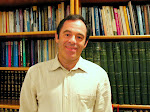 On the last page the Talmud mentioned Hanukkah, in connection with oils used used on it and on Shabbat. This is the only mention of Hanukkah in the Talmud. What is the reason for Hanukkah? When the Greeks entered the Sanctuary, they contaminated all the flasks of oil that were there. When the Hasmoneans gained the upper hand, they searched and found only one flask of oil, with the seal of the High Priest still intact. It contained enough oil for one day. However, a miracle was performed with this oil, and they kindled the lights of the Menorah with it for eight days, until other ritually pure oil could be obtained. The following year the Hasmoneans and the Sanhedrin established these eights days as festival days, to praise God for the miracle.
On the last page the Talmud mentioned Hanukkah, in connection with oils used used on it and on Shabbat. This is the only mention of Hanukkah in the Talmud. What is the reason for Hanukkah? When the Greeks entered the Sanctuary, they contaminated all the flasks of oil that were there. When the Hasmoneans gained the upper hand, they searched and found only one flask of oil, with the seal of the High Priest still intact. It contained enough oil for one day. However, a miracle was performed with this oil, and they kindled the lights of the Menorah with it for eight days, until other ritually pure oil could be obtained. The following year the Hasmoneans and the Sanhedrin established these eights days as festival days, to praise God for the miracle.Can we derive a Hanukkah law from the following law of damages: if a camel laden with flax was passing through the street, and his flax protruded into a shop where it caught fire from the shopkeeper's lamp, and then the burning flax set fire to a mansion - the camel driver is liable. If the shopkeeper has set his lamp outside, then the shopkeeper is liable. Rabbi Yehudah adds that if it was a Hanukkah light, even outside, the shopkeeper is not liable, since it is a mitzvah to light the Hanukkah lamp outside, to publicize the miracle. On analysis, we see that a Hanukkah light must be placed within ten hand-breadths above the ground because if it were allowed to be placed higher, the camel driver could have this winning claim: “You should have put your Hanukkah lamp higher than a camel!” – Not necessarily, since if the law would require a shopkeeper to put the lamp that high, he might not have lighted it altogether.
Art: Cornelis Jacobsz Delff - A Still Life with an oil lamp

No comments:
Post a Comment